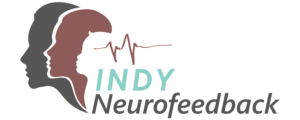Omega-3 Can Help After a Brain Injury
 Although there is no known cure for a brain injury, there is an established Omega-3 Protocol for the management and recovery of brain health following an injury to the brain.
Although there is no known cure for a brain injury, there is an established Omega-3 Protocol for the management and recovery of brain health following an injury to the brain.
Omega-3s are essential to the development of the human brain. So it makes sense that following brain trauma, such as a concussion, providing omega-3s can help the brain begin to heal itself.
What are Omega-3s?
Omega-3s are unsaturated fatty acids that occur naturally in fish oils. Omega-3 is classified by the FDA as “generally recognized as safe” (GRAS). In fact, the FDA has stated that up to three grams of EPA+DHA per diem is safe for the average adult without fear of adverse events. (There are no known significant drug interactions with omega-3 fatty acids.) Omega-3s can be ingested as supplements or through food.
According to the American Medical Association (AMA), Omega-3s appear to prevent irregular heartbeat, reduce fatty plaques inside artery walls, decrease blood clotting, decrease triglycerides (blood fat), increase HDL (good cholesterol) and decrease inflammation.
Since many head injuries result in brain inflammation, and often, brain bleeds, the qualities of Omega-3s make them especially helpful for brain health after injury.
How can you add more Omega-3s into your diet?
It’s simple. Add more fish to your diet or take a high quality, pharmaceutical grade fish oil supplement.
Here are the fish that are highest in Omega-3s:
- Mackerel (4,107 mg per serving)
- Salmon (4,023 mg per serving)
- Cod Liver Oil (2,664 mg per serving)
- Herring (3,181 mg per serving)
- Oysters (565 mg per serving)
- Sardines (2,205 mg per serving)
- Anchovies (951 mg per serving)
- Caviar (1,086 mg per serving)
There is an established Omega-3 brain health protocol, established by Dr. Michael A. Lewis, a member of the Brain Health Education & Research Institute.
- STEP 1: Begin with a high quality fish oil supplement—Not all fish oil is the same
For Capsules: Each 1,000mg soft gel Omega-3 capsule should contain approximately 600mg of EPA & DHA omega‐3s combined.
You will need approximately 175 capsules for first two weeks.
For liquid concentrate Omega-3 oil: 1 ½ teaspoons (7.5 ml), containing approximately 3000mg (3gm) of EPA & DHA omega-3s combined.
- STEP 2: Begin taking Omega-3 capsules as soon as possible following a brain injury:
WEEK 1:
Take 5 capsules (3 g of EPA/DHA) three times a day for 7 days
or 1 ½ teaspoons will provide approximately 3 g (3000 mg) of EPA/DHA. In most cases, five capsules of concentrated fish oil is sufficient.
WEEK 2:
Take 5 capsules (3 g of EPA/DHA) two times a day for 7 days.
- STEP 3: Maintenance. Continuing a MAINTENANCE DOSE is important to maintain optimal brain health.
Take 5 capsules (3 g of EPA/DHA) a day.
This Brain Health and Research Institute protocol has been developed as a guideline. Since every patient and every brain injury is different, patients and their healthcare providers may wish to adjust the dosage to their needs. For example, if the injury is more severe or happened months or years prior, the patient may prefer to be on a higher dose for a longer period of time.
How can you tell that the Omega-3 protocol is helping your brain function?
Patients typically notice improvements within the first week, and often in the first several days. Depending on the individual and the injury, patients have described being able to think more clearly, more energy throughout the day, decrease headache frequency and/or intensity, and a sense of calmness.
Although this clinical protocol was tested following concussions and head injuries, some patients using the Omega-3 protocol following a stroke, or with ADHD symptoms, or depression, may also benefit from having more of the nutritional foundation of Omega-3s. Naturally, results will vary from person to person.
As always, every individual is different. Consult with your healthcare provider for the best advice for you.
